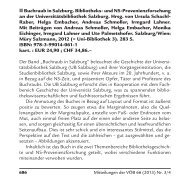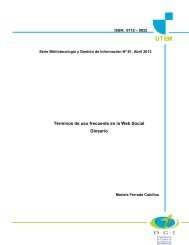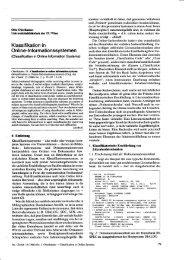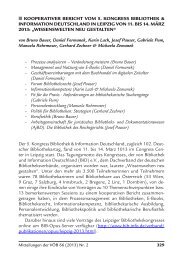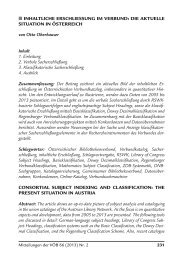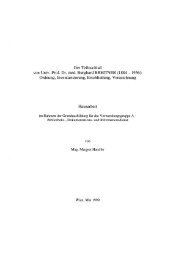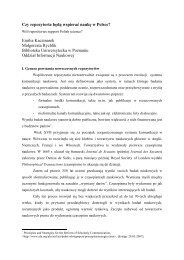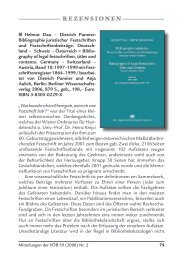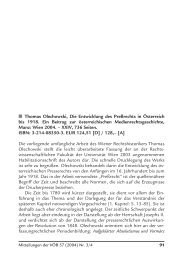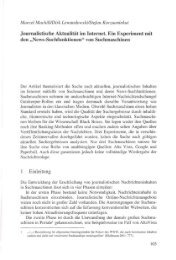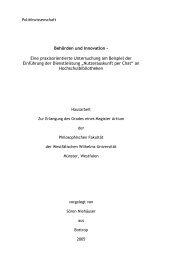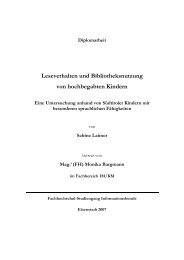DISEÑO, IMPLEMENTACIÓN Y EVALUACIÓN DE UNA - E-LIS - rclis
DISEÑO, IMPLEMENTACIÓN Y EVALUACIÓN DE UNA - E-LIS - rclis
DISEÑO, IMPLEMENTACIÓN Y EVALUACIÓN DE UNA - E-LIS - rclis
You also want an ePaper? Increase the reach of your titles
YUMPU automatically turns print PDFs into web optimized ePapers that Google loves.
GRONLUND, N. E. (2000). How to write and use instructional objectives. 6th edition. Upper Saddle<br />
River, NJ: Merrill.<br />
GROS, B., et, al. (1997). “Instructional Design and the Authoring of Multimedia and Hypermedia<br />
Systems: Do as Marriage Make Sense?” en Educational Technology, (37), p.48-56, apud. Peter Lisle<br />
(1997). What is Instructional Design Theory? [Documento en línea]<br />
http://hagar.up.ac.za/catts/learner/peterd1/ID%20Theory.htm [Consultado el 5 de mayo de 2008].<br />
HAGSTROM, Fran. (1995). Voices of thinking and speaking. En: MARTIN, Laura M. W. (Ed);<br />
NELSON, Katherine (Ed); et-al. (1995). Sociocultural psychology: Theory and practice of doing and<br />
knowing. Learning in doing: Social, cognitive, and computational perspectives. (pp. 276-290).<br />
HAKKARAINEN, P. (1999). Play and motivation. In Y. Engeström (ed.), Perspectives on activity theory.<br />
Cambridge: Cambridge University Press, p. 231-249.<br />
HANNAFIN, M.. J., HANNAFIN, K. M., LAND, S. M., & OLIVER, K. (1997) Grounded practice and the<br />
design of learning systems. Educational Technology Research and Development, 45(3), 101-117.<br />
HARRIS, J. (1994) Information collection activities. The Computing Teacher. 32-36. (March).<br />
HART, Graham. (2003) Key Issues in Designing Award-Bearing Courses for On-line Delivery.<br />
http://intra.ultralab.net/~graham/ Madrid_Key%20Issues_Ultra.pdf<br />
HEDBERG, J. G. (2002) Designing High Quality Learning Environments: Reflections on Some<br />
Successes and Failures. In ED-MEDIA 2002 World Conference on Educational Multimedia,<br />
Hypermedia and Telecommunications. Proceedings (14th) Denver, Colorado, June 24-29.<br />
HERNÁN<strong>DE</strong>Z SALAZAR, P. (2004) Modelo para generar programas sobre la formación en el uso de<br />
tecnologías de información. México: <strong>UNA</strong>M, Centro Universitario de Investigaciones Bibliotecológicas,.<br />
108 p. (Sistemas Bibliotecarios de Información y Sociedad)<br />
HIRUMI, A. (2005) Analyzing and Designing e-learning Interactions. DRAFT.<br />
HIRUMI, A. (2002) A framework for analysing, designing, and sequencing planned elearning<br />
interactions. The Quarterly Review of Distance Education, 3(2): 141-160.<br />
HIRUMI, A. 2002b) The design and sequencing of e-learning interactions: A grounded approach.<br />
International Journal on E-Learning, 1:19-27.<br />
HORNUNG, Leonard. Asynchronous Communication in a Grade 3-4 Elementary Classroom.<br />
http://tcdsbstaff.ednet.ns.ca/hornungl/Mr%20H%27s%20Portal/Projects/Research_Paper/Research_W<br />
eb/Chapter2_Literature_Review.htm (Consultado el 20 de julio de 2007)<br />
http://dspace.idict.cu/bitstream/123456789/215/1/CULTURA+INFORMACIONAL.pdf [Consultado el 11<br />
de febrero de 2006]<br />
IL'ENKOV, E. V. (1982) The dialectics of the abstract and the concrete in Marx's 'Capital'. Moscow:<br />
Progress.<br />
IL'ENKOV, E. V. (1977) Dialectical logic: Essays in its history and theory. Moscow: Progress.<br />
INGWERSEN, P. (1996) Cognitive perspectives of information retrieval interaction. Journal of<br />
Documentation, 52(1), 3-50.<br />
JONASSEN, D. H., MCALEESE, T.M.R. (Undated). A Manifesto for a constructivist approach to<br />
technology in higher education. [Documento en línea] http://apu.gcal.ac.uk/clti/papers/TMPaper11.html<br />
[Consultado el 12 de diciembre de 2005].<br />
33



